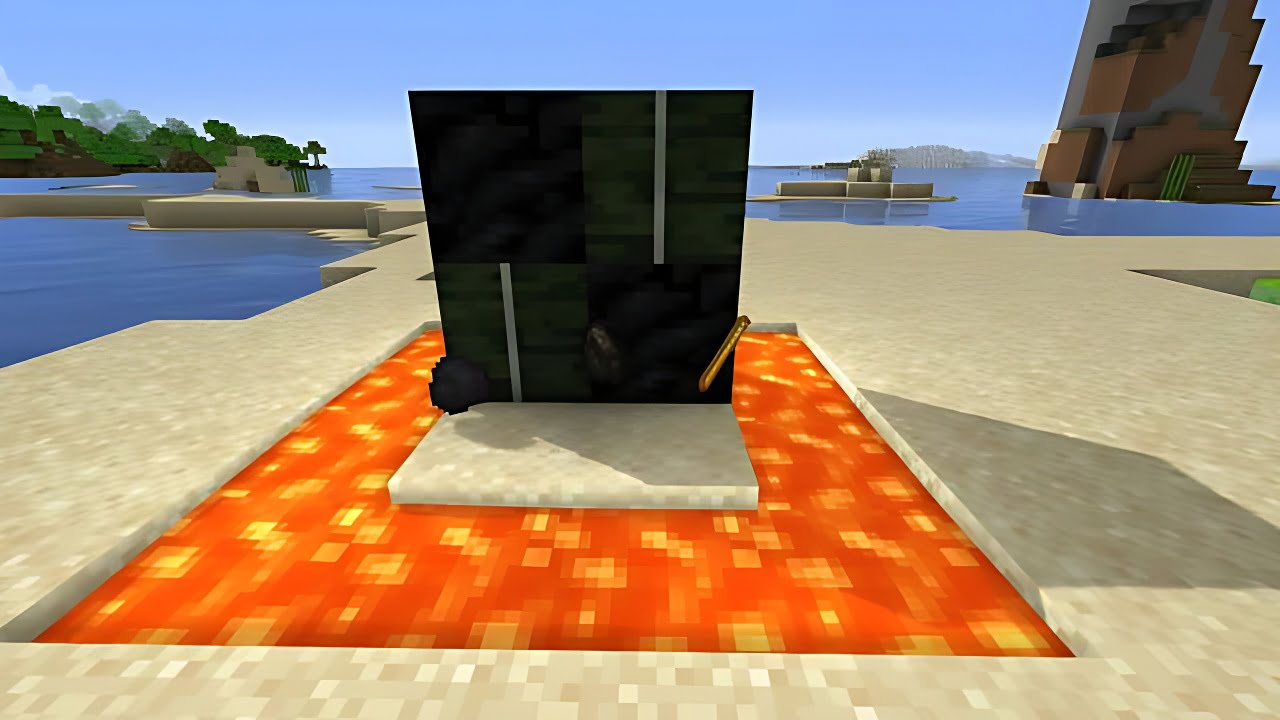Efficient resource management is a cornerstone of successful gameplay in the Minecraft. Whether you’re an architect crafting magnificent structures, an adventurer braving the depths of the Nether, or a farmer tending to crops, the resources you gather and how you use them can greatly impact your Minecraft journey.
Among these resources, choosing the right fuel for smelting and cooking plays a critical role. The right fuel not only saves time but also resources, allowing you to maximize your efficiency. As Minecraft continues to evolve, so do the options for fuel sources. Understanding the nuances of these fuel sources is essential for those seeking to optimize their gameplay.
Here are the 10 best fuels you can use in Minecraft.
Lava Bucket
The lava bucket reigns supreme among Minecraft fuel sources, boasting the ability to smelt an extraordinary 100 items per bucket. Its unmatched efficiency makes it the most long-lasting fuel available. Procuring lava buckets, however, is not without risk.
Players often venture into the perilous Nether or scout for lava pools in the Overworld. Despite the risks, the payoff in fuel efficiency makes the lava bucket a highly sought-after resource for large-scale smelting operations.
Block of Coal
The block of coal stands out as a highly efficient fuel source, capable of smelting up to 80 items. This efficiency surpasses that of individual coal pieces, making it a superior choice for extensive smelting sessions. Crafting a block of coal is straightforward, requiring nine pieces of coal.
This compression makes it a space-saving and resource-efficient option. Additionally, the block of coal is convenient for those who have accumulated large amounts of coal, allowing them to convert excess resources into a more potent fuel form.
Dried Kelp Block
Dried kelp blocks, while not as efficient as lava or coal blocks, offer a renewable and eco-friendly fuel alternative, capable of smelting 20 items each. Their sustainability is a key advantage, especially in gameplay focused on renewable resources.
Dried kelp is easy to farm and process, making it a practical choice for continuous fuel supply. This fuel source also adds a unique aspect to the game, encouraging players to explore aquatic biomes for kelp and invest in its cultivation.
Blaze Rod
Yielding 12 items per rod, blaze rods are a highly efficient yet challenging fuel source to obtain. Their rarity is primarily due to their origin; blaze rods are only dropped by blazes in the Nether, making them a treasure for daring adventurers.
Despite being less efficient than dried kelp blocks, blaze rods offer a high reward for the risk involved in acquiring them. They are a viable fuel option for players who frequently venture into the Nether and engage in combat with blazes.
Coal/Charcoal
As staple fuels in Minecraft, coal and charcoal each smelt eight items per piece, offering a reliable and accessible option for players. These fuels are particularly valuable in the early game stages, where more complex or efficient fuels are not yet accessible.
Coal is commonly found in cave systems, while charcoal can be produced by smelting wood logs, making both easily obtainable. Their versatility and availability make them ideal for a wide range of smelting tasks.
Wooden Slabs
Wooden slabs in Minecraft offer a balance between efficiency and availability as a fuel source. Each slab can smelt 1.5 items, placing them on par with wooden planks in terms of efficiency. Their advantage lies in their crafting yield; one wooden plank can be crafted into two slabs, effectively doubling the potential fuel from a single plank.
This makes wooden slabs a particularly economical choice for players. Easily crafted and found in abundance, they are a go-to option for smelting tasks, especially when conserving resources is a priority.
Wooden Planks
Wooden planks, a fundamental resource in Minecraft, can smelt 1.5 items each, making them a readily available fuel source. Their ease of production from logs and omnipresence across various biomes make them a convenient choice, especially for players in the initial phases of their Minecraft journey.
Wooden Doors
Wooden doors, capable of smelting one item each, stand out due to their stackability up to 64. This feature makes them a practical fuel choice, especially when players find themselves with excess doors from crafting activities. Their uniform smelting ability across different wood types adds to their convenience.
Wooden Tools
Utilizing wooden tools as fuel is a resource-savvy strategy in Minecraft. Each wooden tool, whether a pickaxe, shovel, or axe, can smelt one item. This feature becomes particularly useful as players progress and replace these early-game tools with better materials.
Instead of discarding them, you can efficiently recycle these tools as a fuel source, making the most out of every collected resource. This approach not only saves inventory space but also adds an element of sustainable gameplay.
Sticks
Sticks serve as a basic yet practical fuel source in Minecraft, capable of smelting half an item each. Their easy accessibility, being craftable from wood blocks or gathered from leaf decay, makes them a reliable backup fuel. 3
Although not the most efficient, sticks are invaluable in situations where other fuels are not readily available. Their role as an emergency fuel option underscores Minecraft’s emphasis on resourcefulness and the importance of even the simplest items in the game’s ecosystem.

